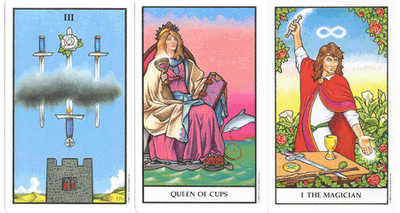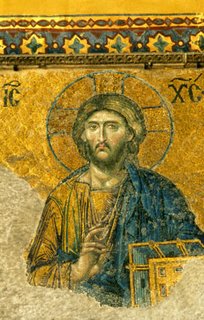Food for Thought

* The Tablet
- This British journal is one of my favorites. ...
Readers can be confident that The Tablet will be a paper of progressive, but responsible Catholic thinking, a place where orthodoxy is at home but ideas are welcome. The Tablet is not controlled by the church hierarchy, which allows it a privileged perspective. Such a privilege must not be abused, but cherished. The Catholic Church represents an extraordinary number of people - one-sixth of the human race - and inevitably there are different approaches and styles, which has given it its capacity for renewal. The ressourcement, the refreshing of Catholic thinking, is as desirable today as it was 40 years ago at the opening of the Second Vatican Council, and we not only hope to report on it, but to be part of it.
* The Journal of Religion and Popular Culture
- This journal is hosted by the Department of Religious Studies and Anthropology at the University of Saskatchewan ...
The Journal of Religion and Popular Culture is a web-based, peer-reviewed journal committed to the academic exploration, analysis and interpretation, from a range of disciplinary perspectives, of the interrelations and interactions between religion and religious expression and popular culture, broadly defined as the products of contemporary mass culture. The journal is based in Canada, but international in scope, and open to explorations of religion and popular culture in a variety of nationalities and cultures.
* Crisis: Politics, Culture & the Church
The mission of CRISIS Magazine is to interpret and shape the direction of contemporary culture from a standpoint of Catholic tradition. We are dedicated to the proposition that the crisis of modernity can be answered by a Christian humanism rooted in the teachings of the Catholic Church. We bring the wisdom of the Catholic tradition into direct dialogue with contemporary politics and culture.
* The Journal of Religion and Film
-From the University of Nebraska, movies :-)
Many films, directly or indirectly, serve a "religious" purpose. Like religions, they present meanings that people give to life. They portray people and the values people embrace in life. The films themselves, then, are a part of the fundamental religious "struggle with the ultimate problems of human life." Articles in the JR & F, then, are not restricted to a denominational list that equates religion with a commonly accepted set of rituals, beliefs, and laws. "Religion," in contemporary times and in the issues of the Journal, is much more personal and interactive than that. It is the living of values constructed in a dialogue between an individual and a culture. A particular worldview is received, adjusted, reapplied, and lived by the individual. So the JR & F will consider not only films that explicitly highlight traditional religious images and themes. Although there will be analysis of films that consider such religious themes as sacred space, sacred times, savior-figures, images of god(s), and battles between good and evil, there also will be investigation of notions and assumptions that underlie everyday, "secular," human talk and action.
* Journal for the Study of the Historical Jesus
- here you can read abstracts of articles or download PDFs ...
The Journal for the Study of the Historical Jesus provides a forum for academic discussion of Jesus within the context of first-century Palestine; accessible to the very wide non-scholarly readership interested in the way this topic is, and has been, investigated and presented.
* Theology Today
- Here you can read poems, book reviews and article excerpts ...
Theology Today, a quarterly ecumenical journal of Christian theology, publishes articles on a wide range of classical and contemporary issues in Christian theology by many of the finest theologians working today. Theology Today is published by Princeton Theological Seminary in Princeton, NJ.































